October 2, 2021
W. S. Body discovered gold in 1859 and died a few months later. The mines in the area of his discovery eventually produced gold valued at more than one hundred million dollars and the town was named in his honor, albeit with an alternate spelling.
Mining proceded slowly until a mine collapse in 1875 revealed a rich body of gold ore. Bodie’s boom years were from 1877-81 but mining continued until 1942.
Only about five percent of the buildings from Bodie’s heyday remains–the others were lost to fire, theft, and the elements.
J. S. Cain, Bodie’s last major landowner, bought properties as they became available. He and his descendents expected that the mine might become profitable again and hired caretakers to watch over the town and protect it from looters and vandals. The town was sold to the state in 1962 and became a state park, but mineral rights were sold to a Canadian company that determined that as much as two billion dollars could still be extracted. Permits for recovery of the ore were denied, however, in the interests of preservation of the town. The state eventually bought the mineral rights.
Today Bodie is being maintained in a state of arrested decay. Roofs, windows and foundations are repaired and stabilized but not restored.
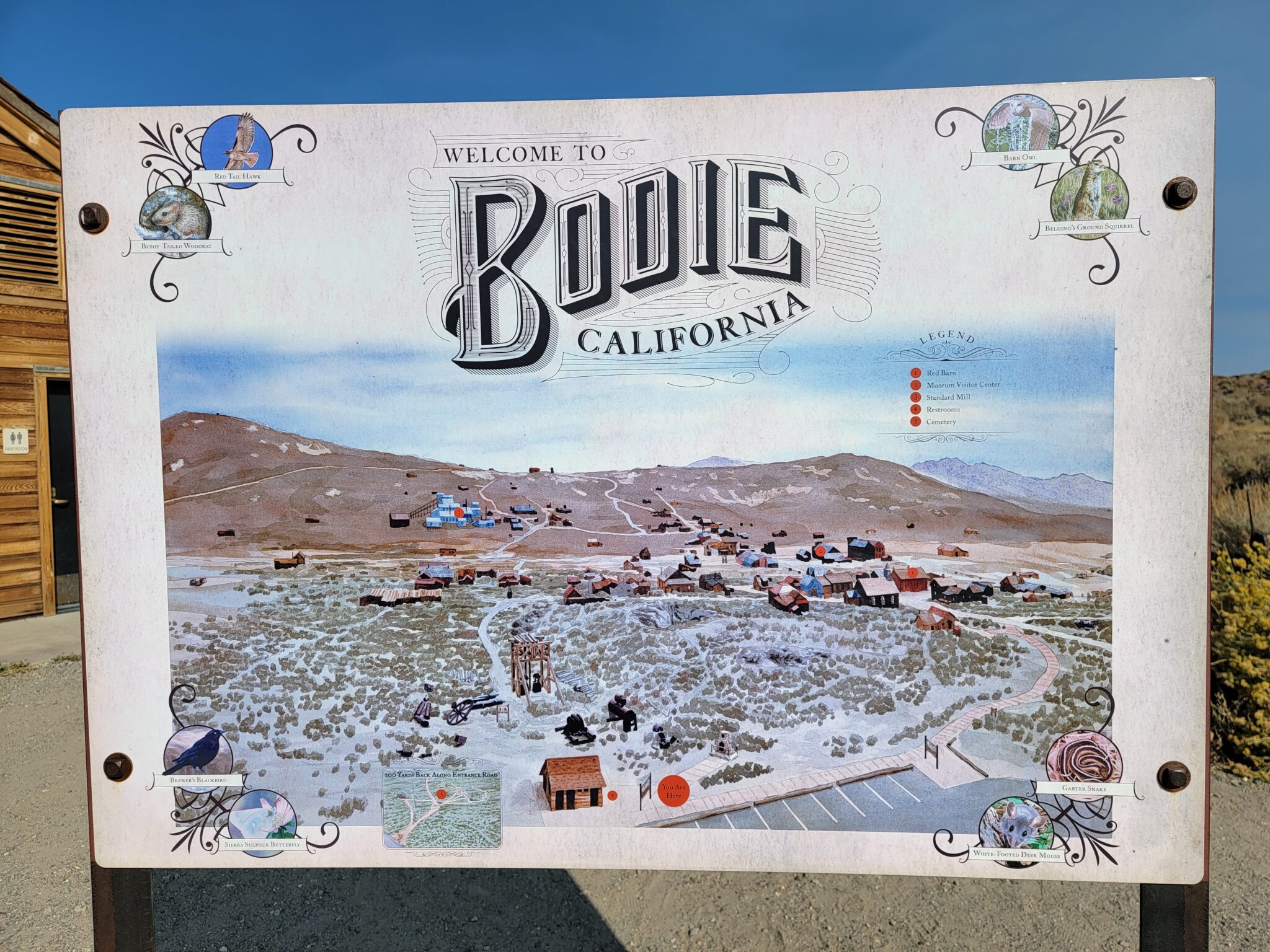
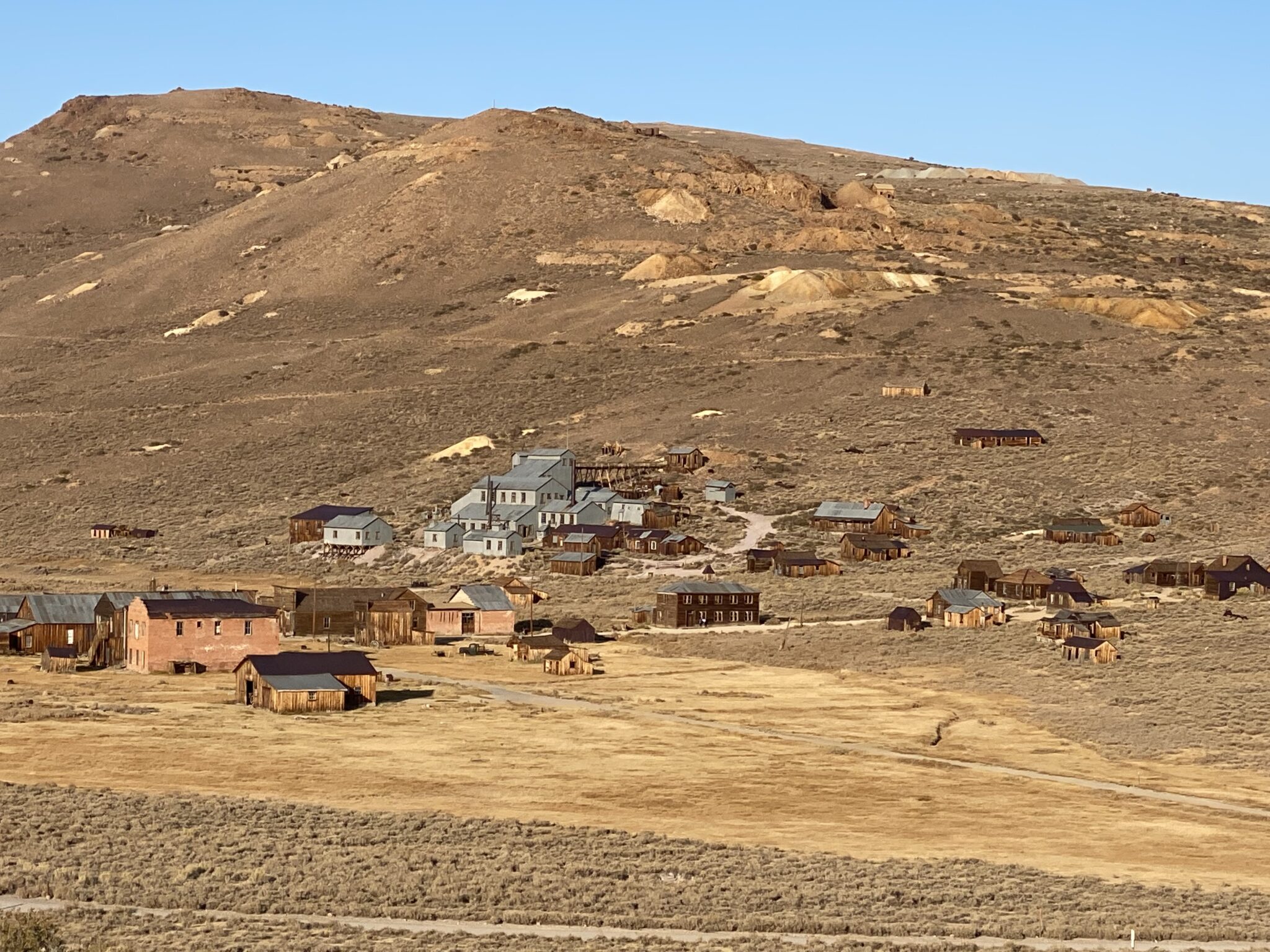
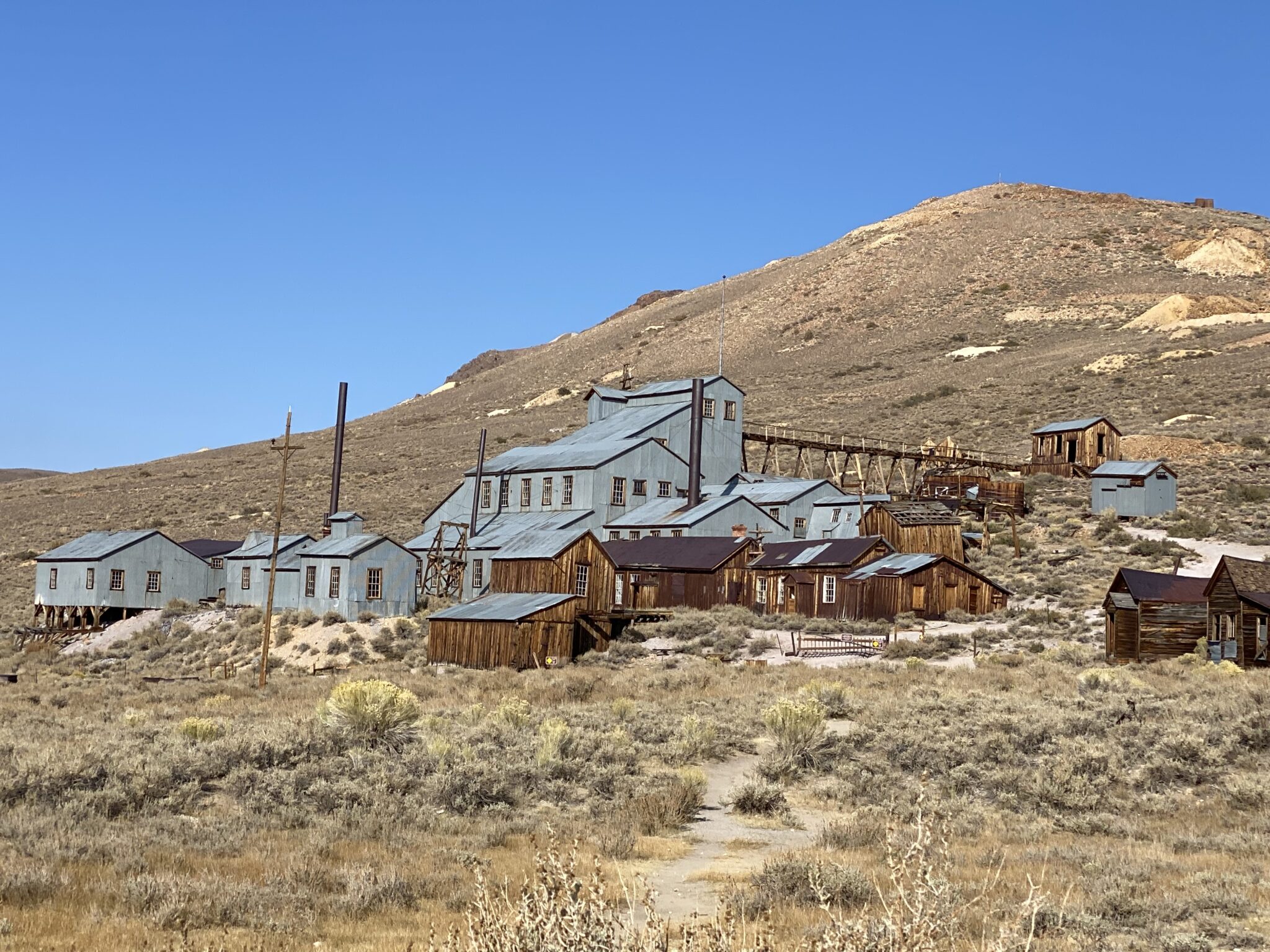
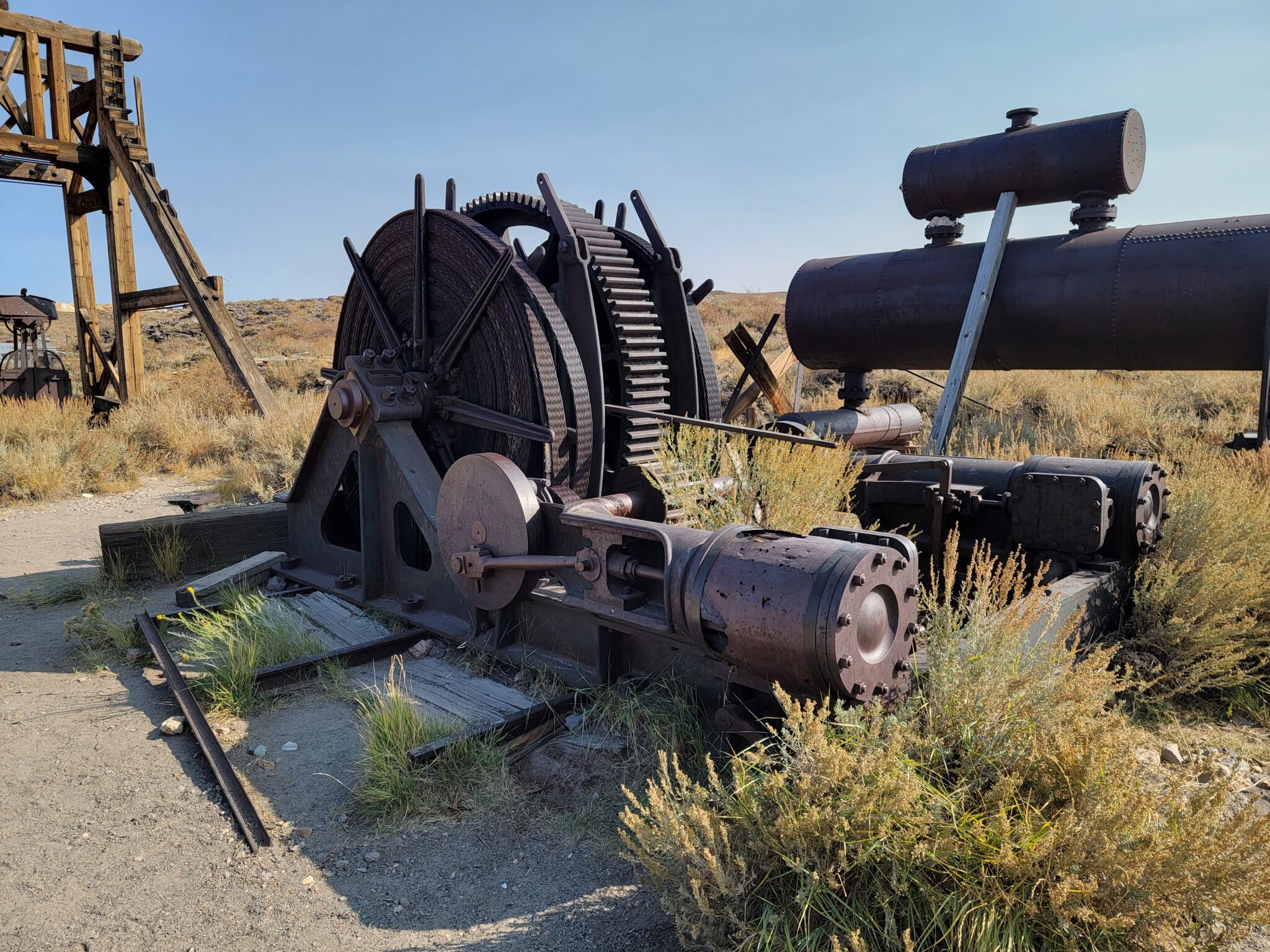
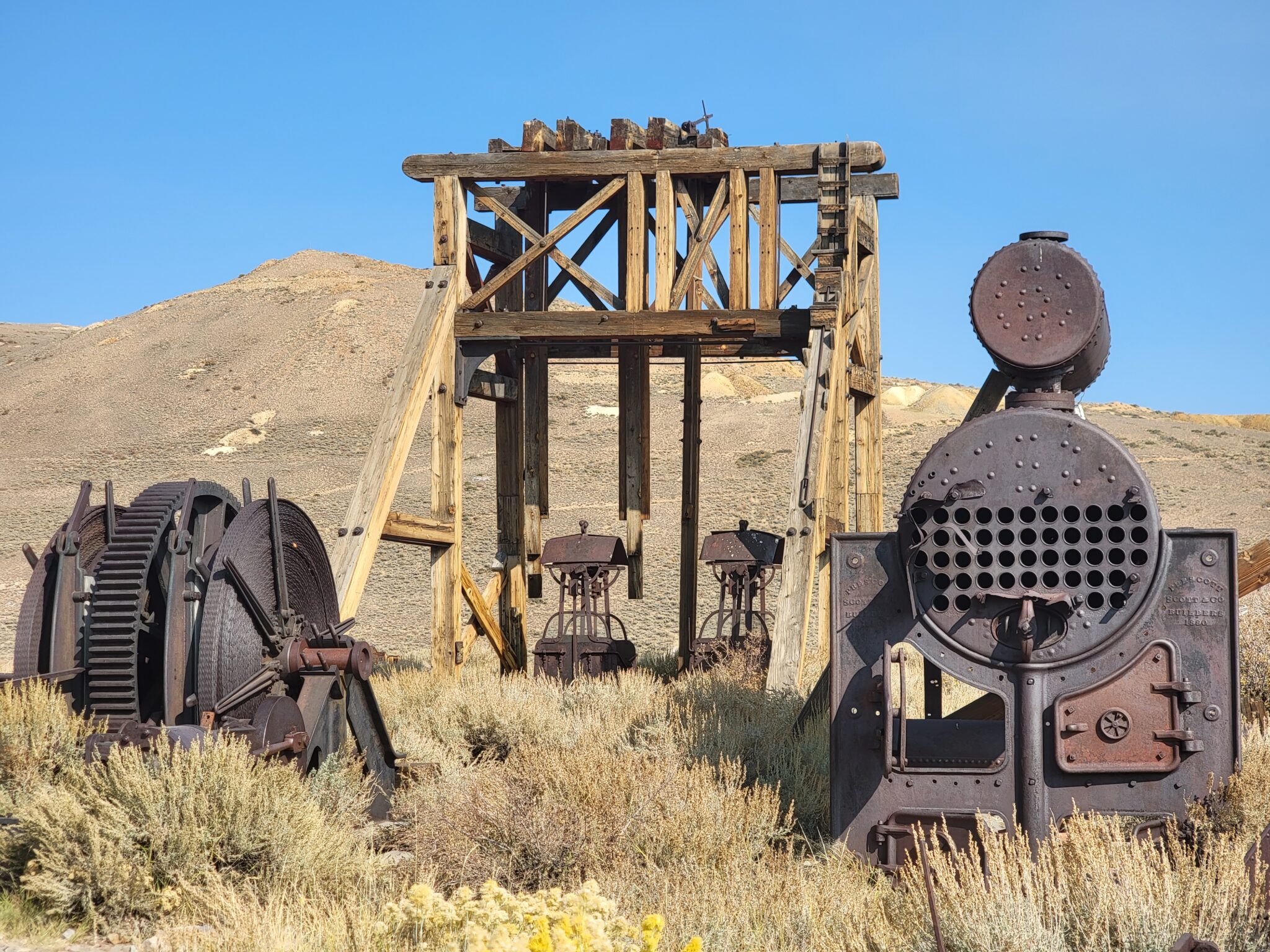
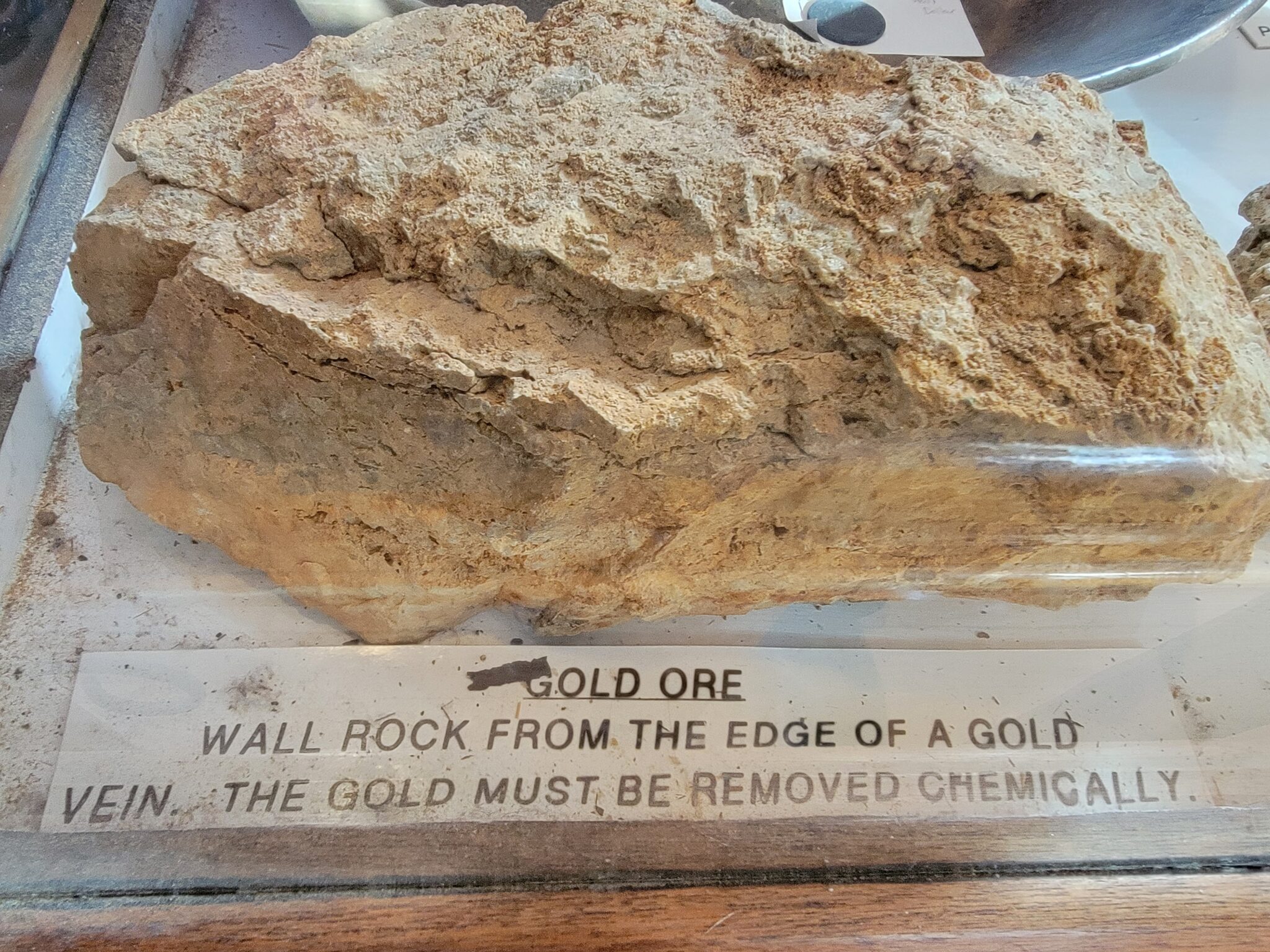

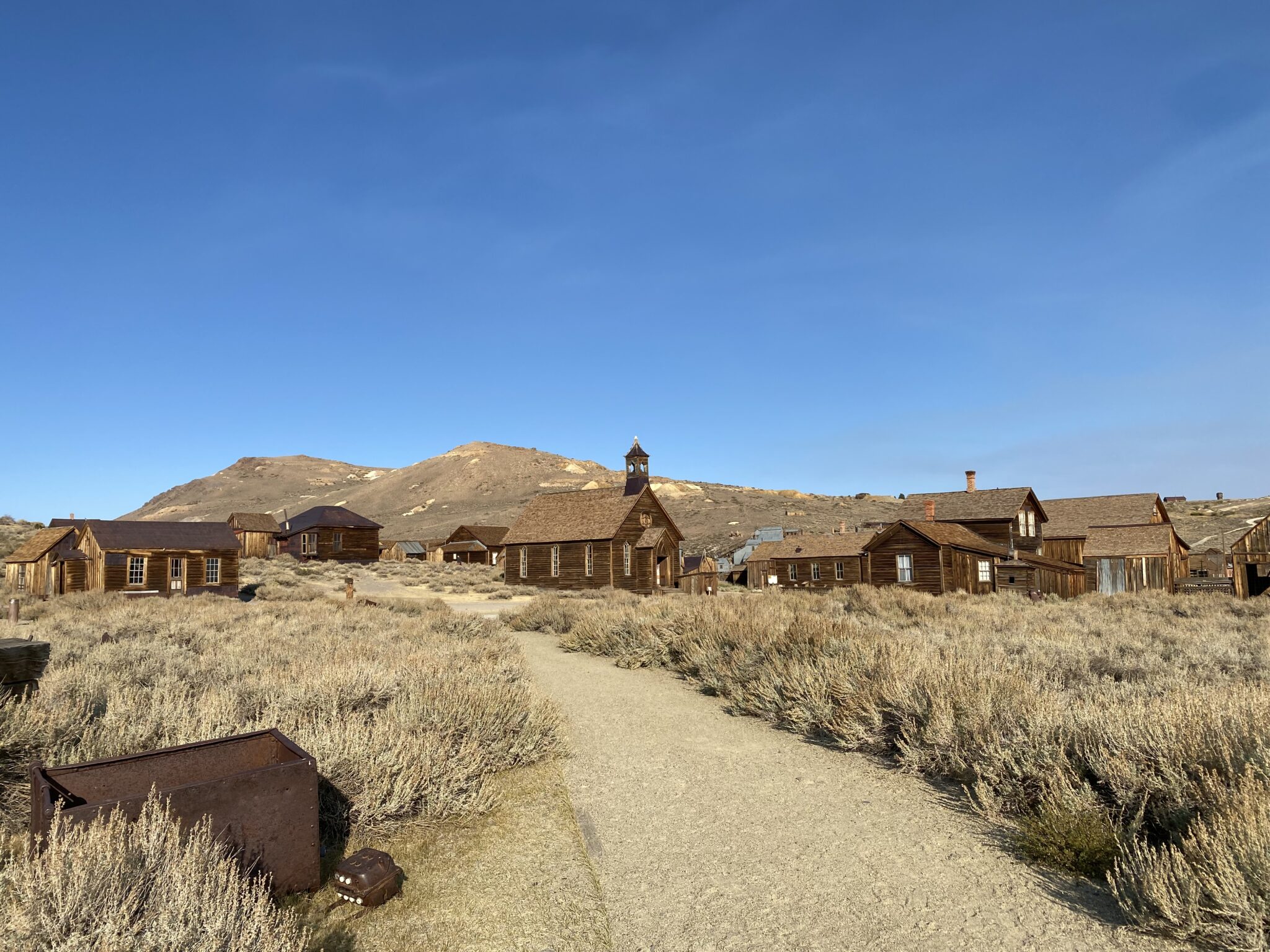
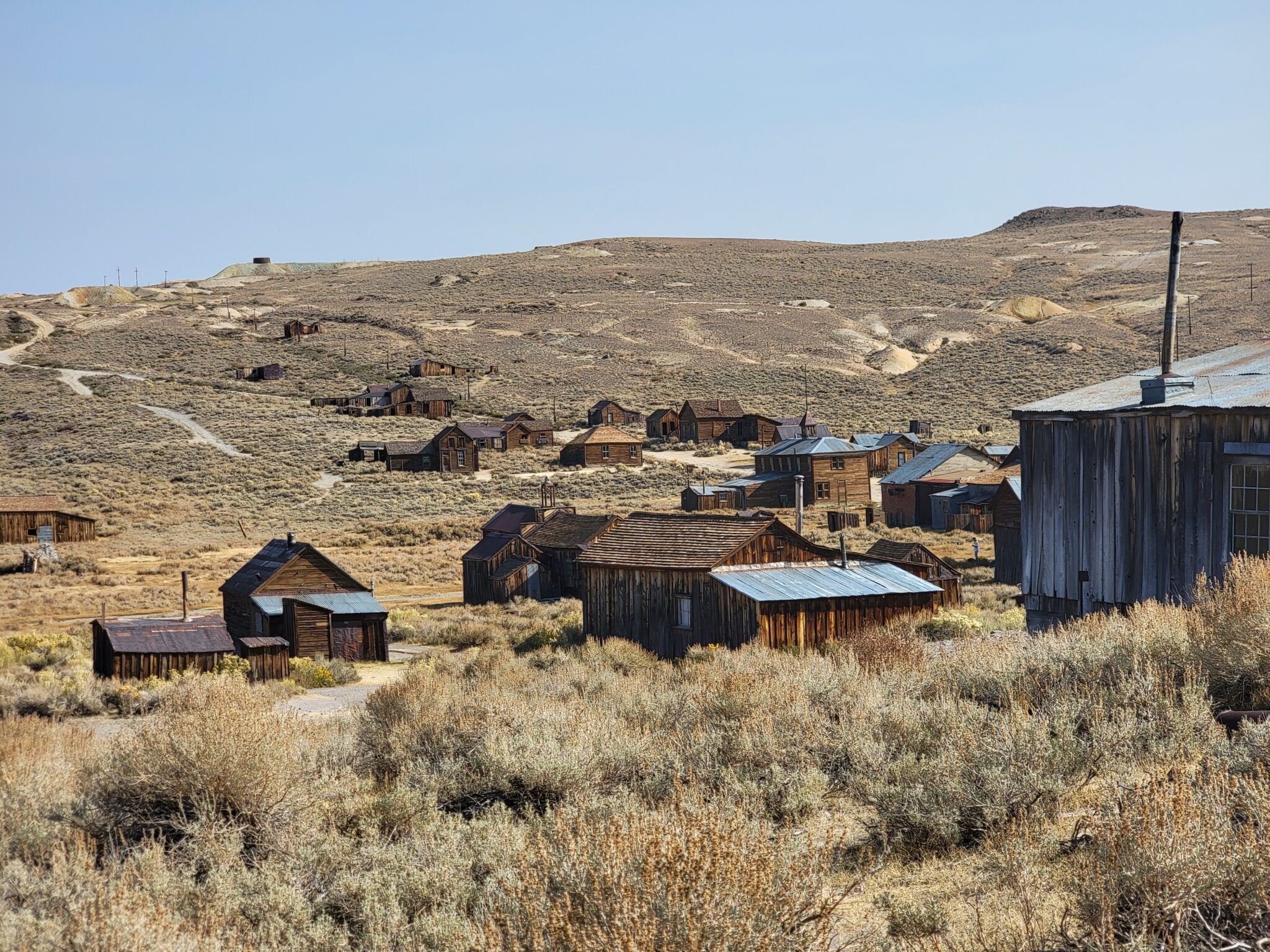
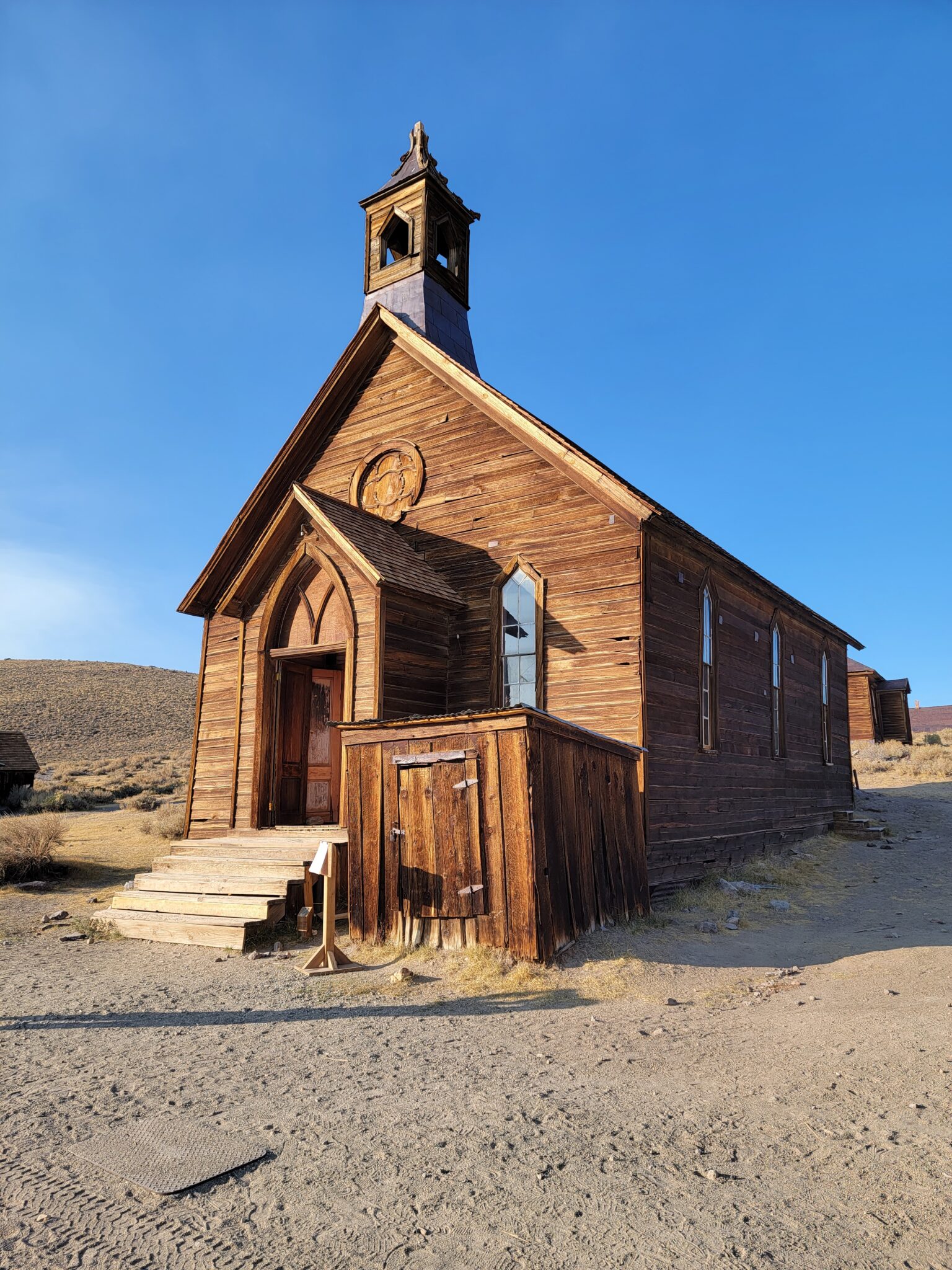
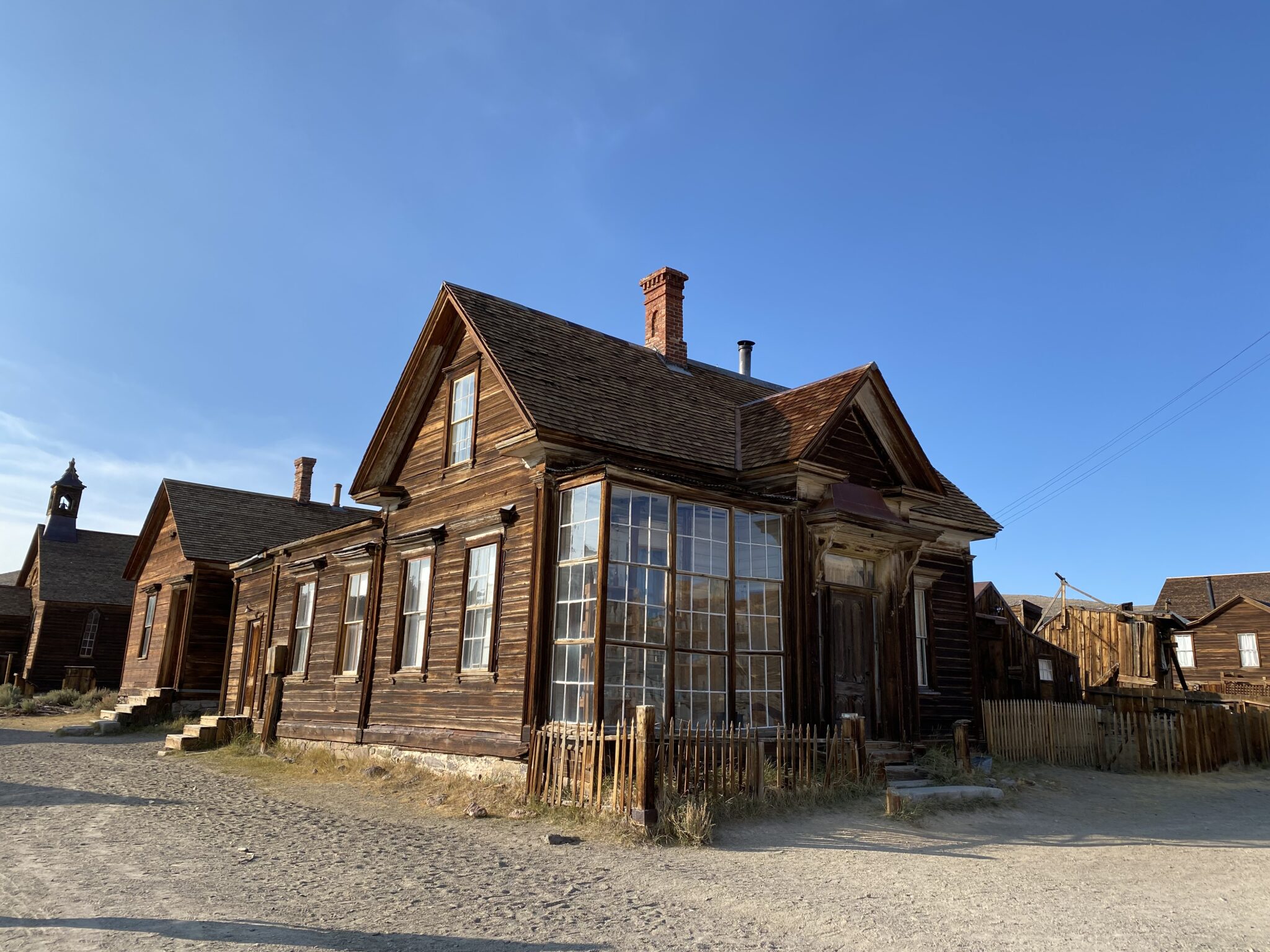
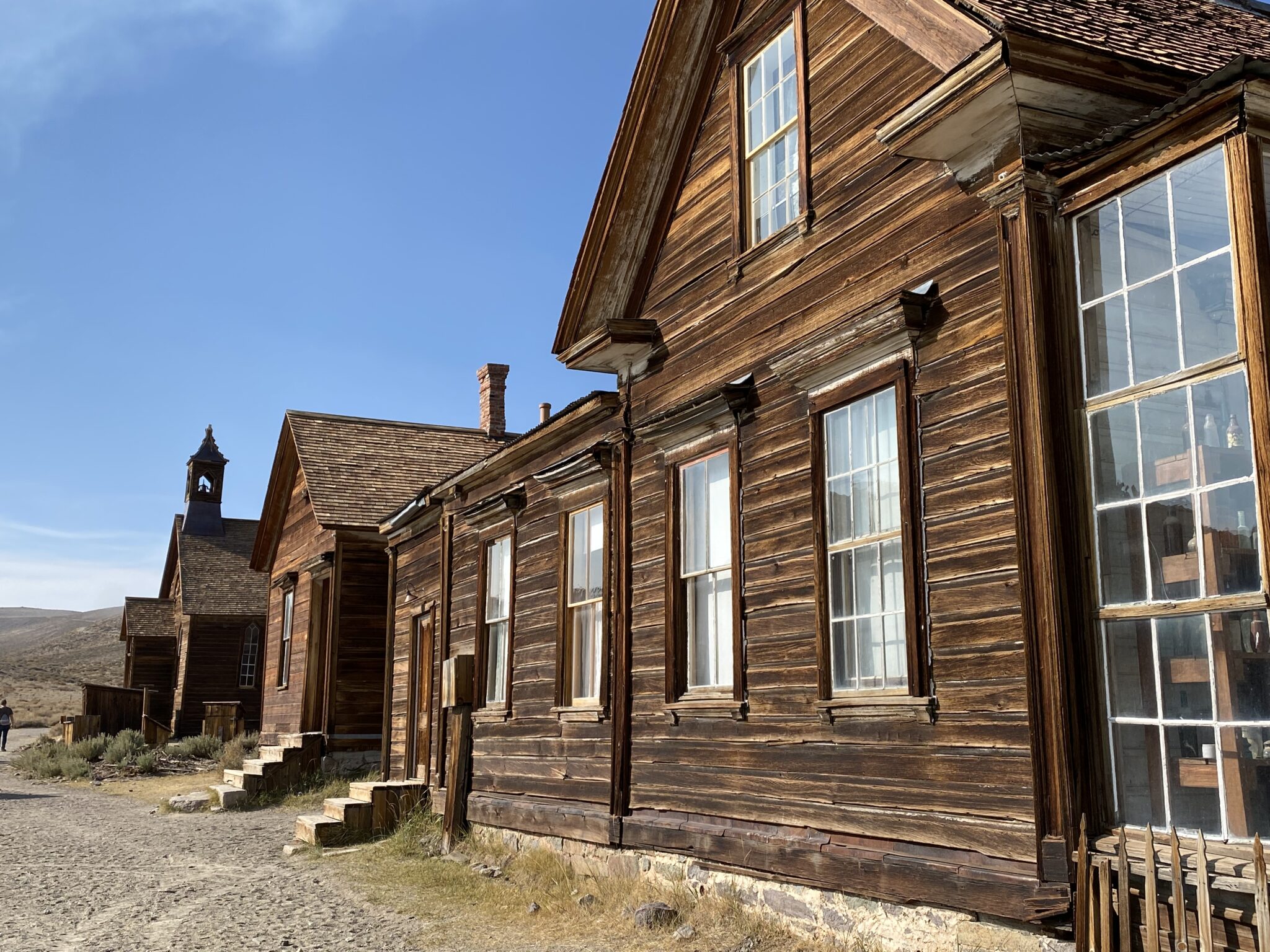
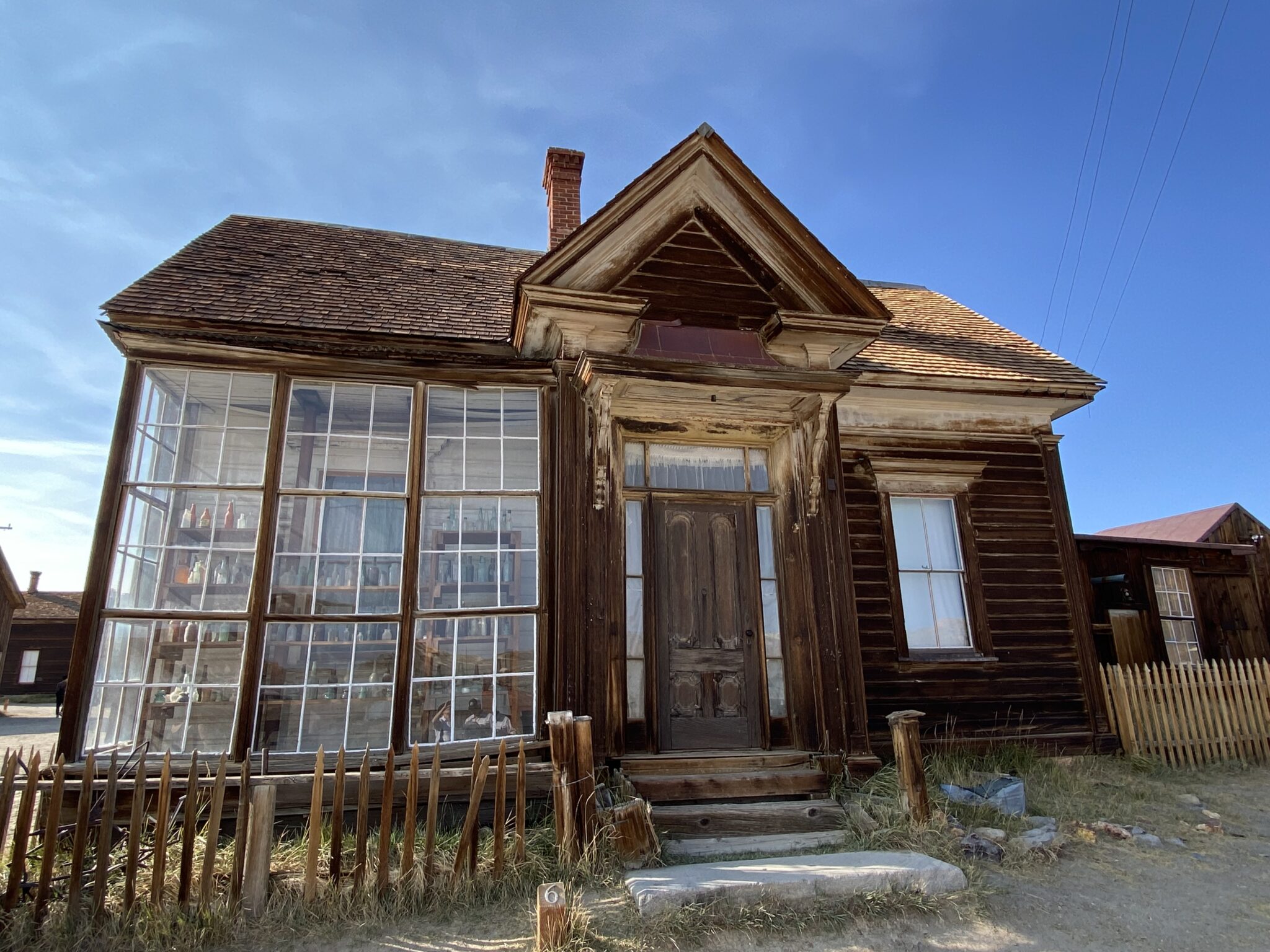
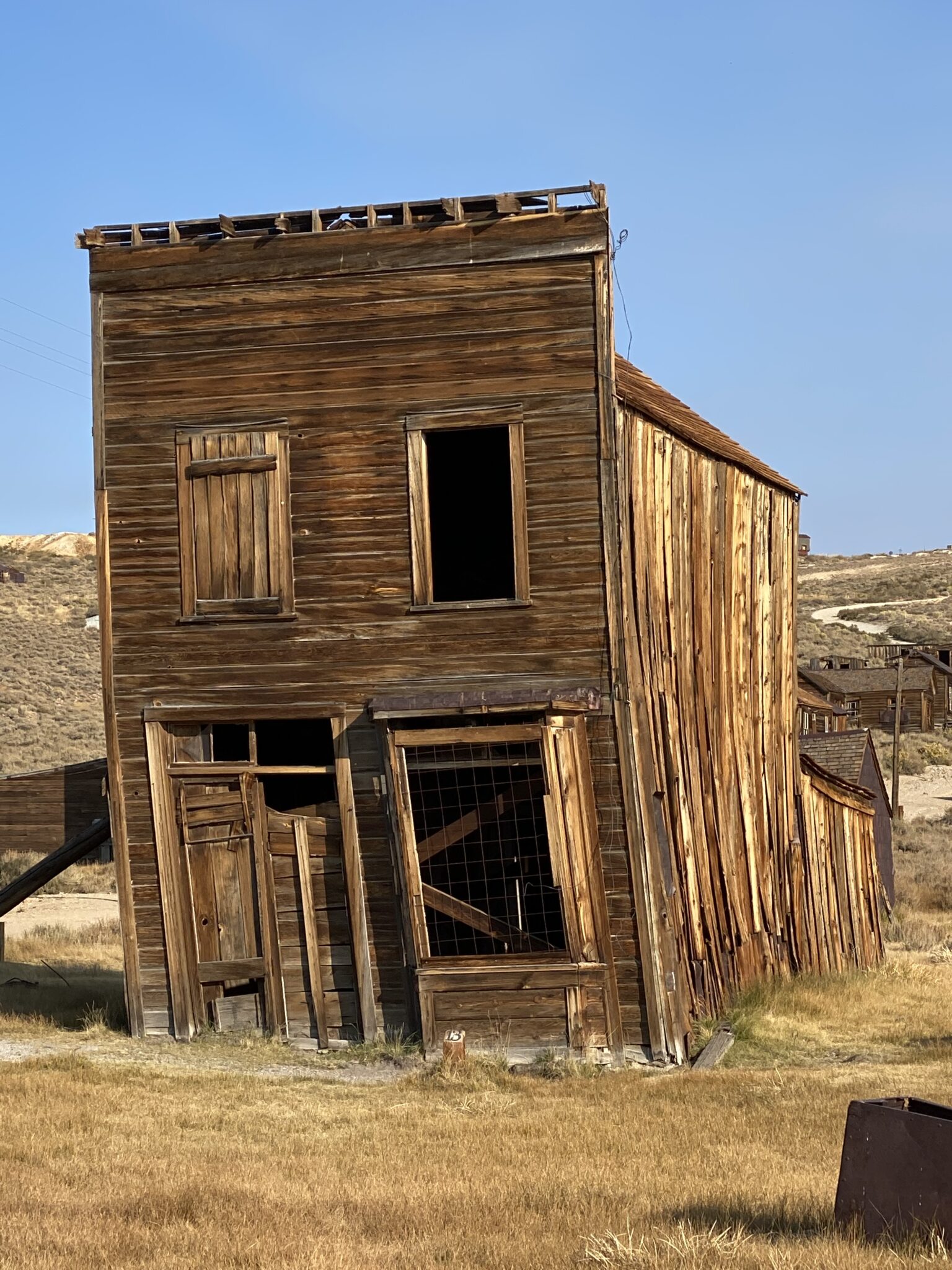
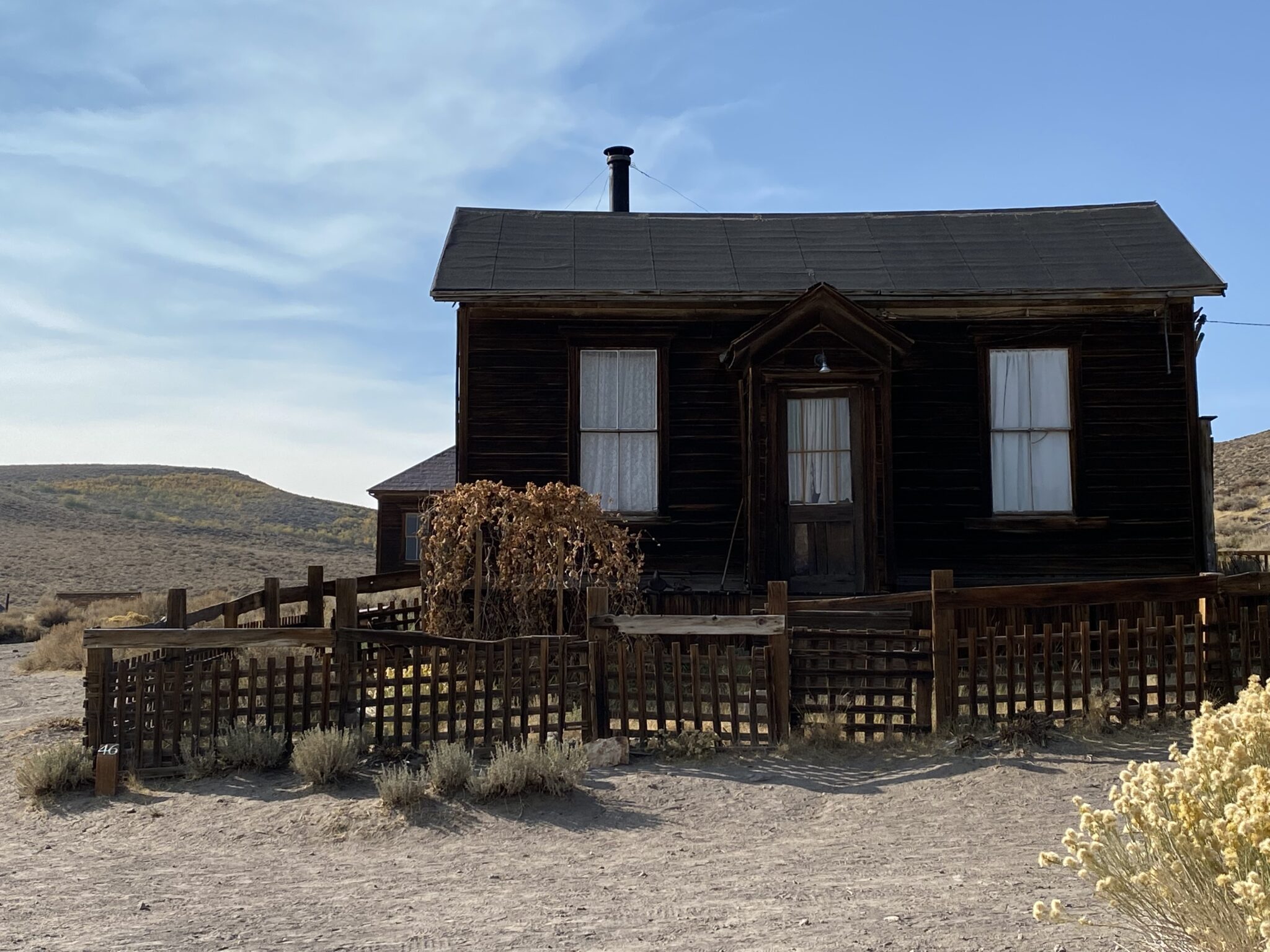
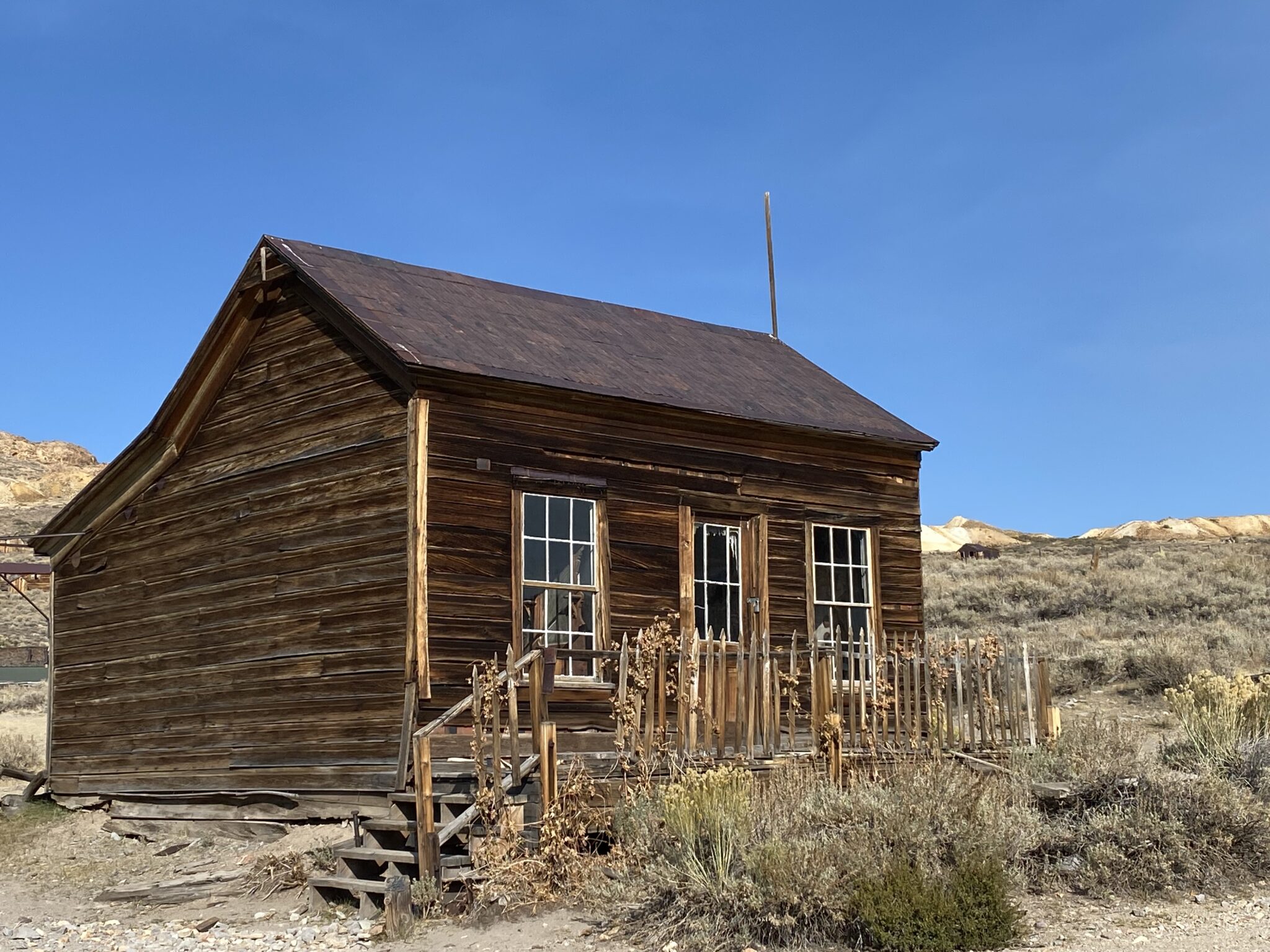
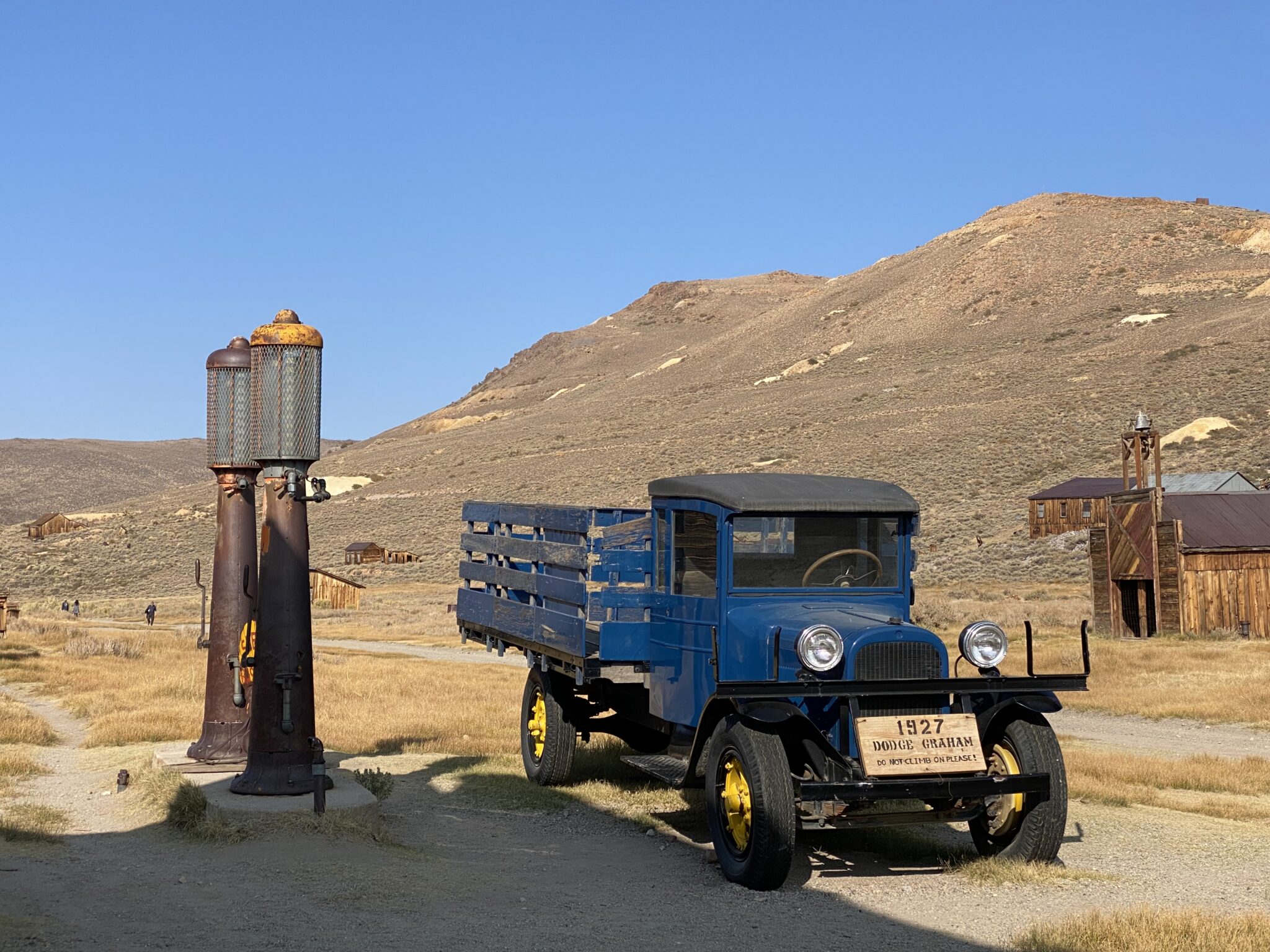
Building Interiors
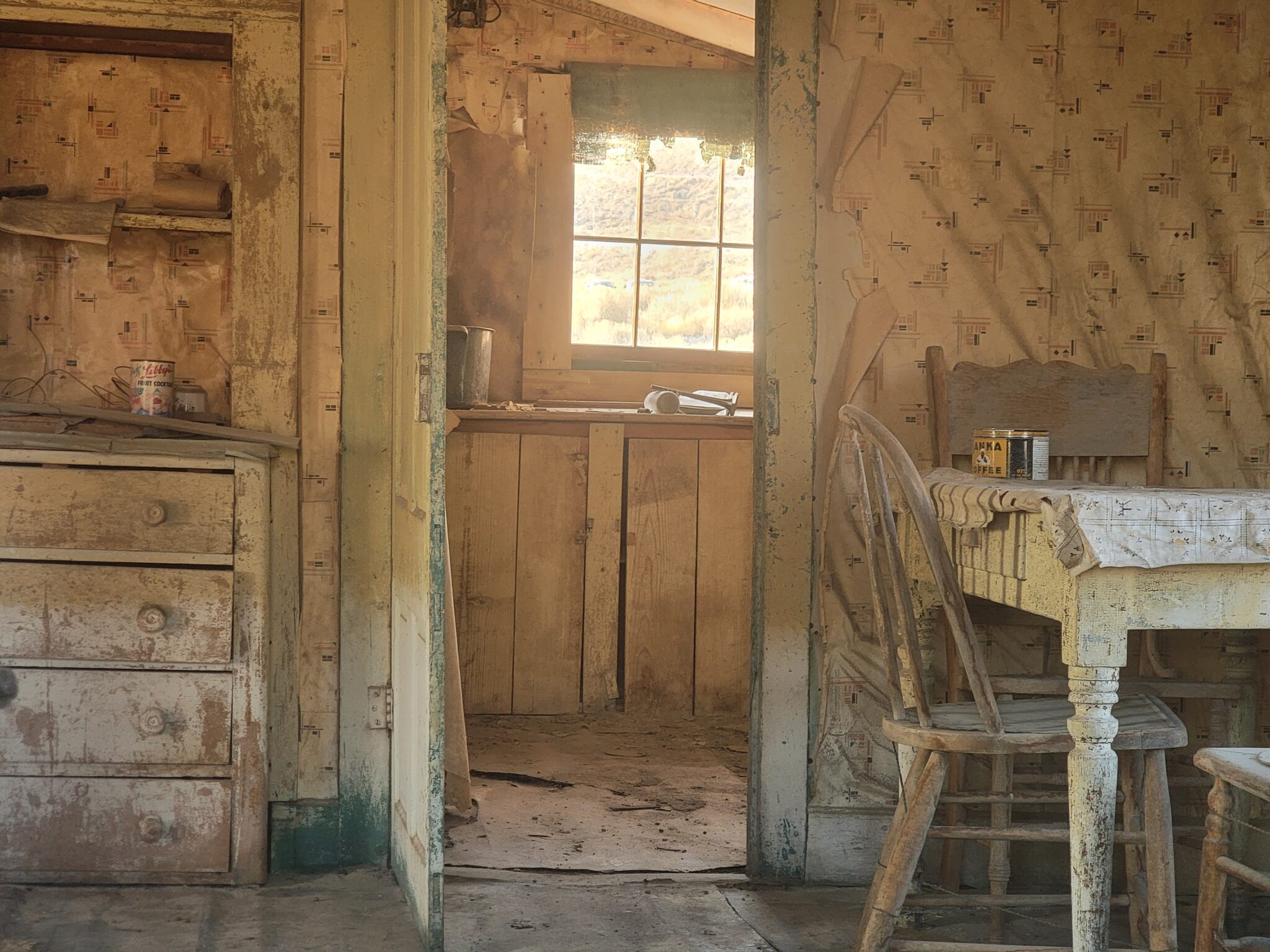
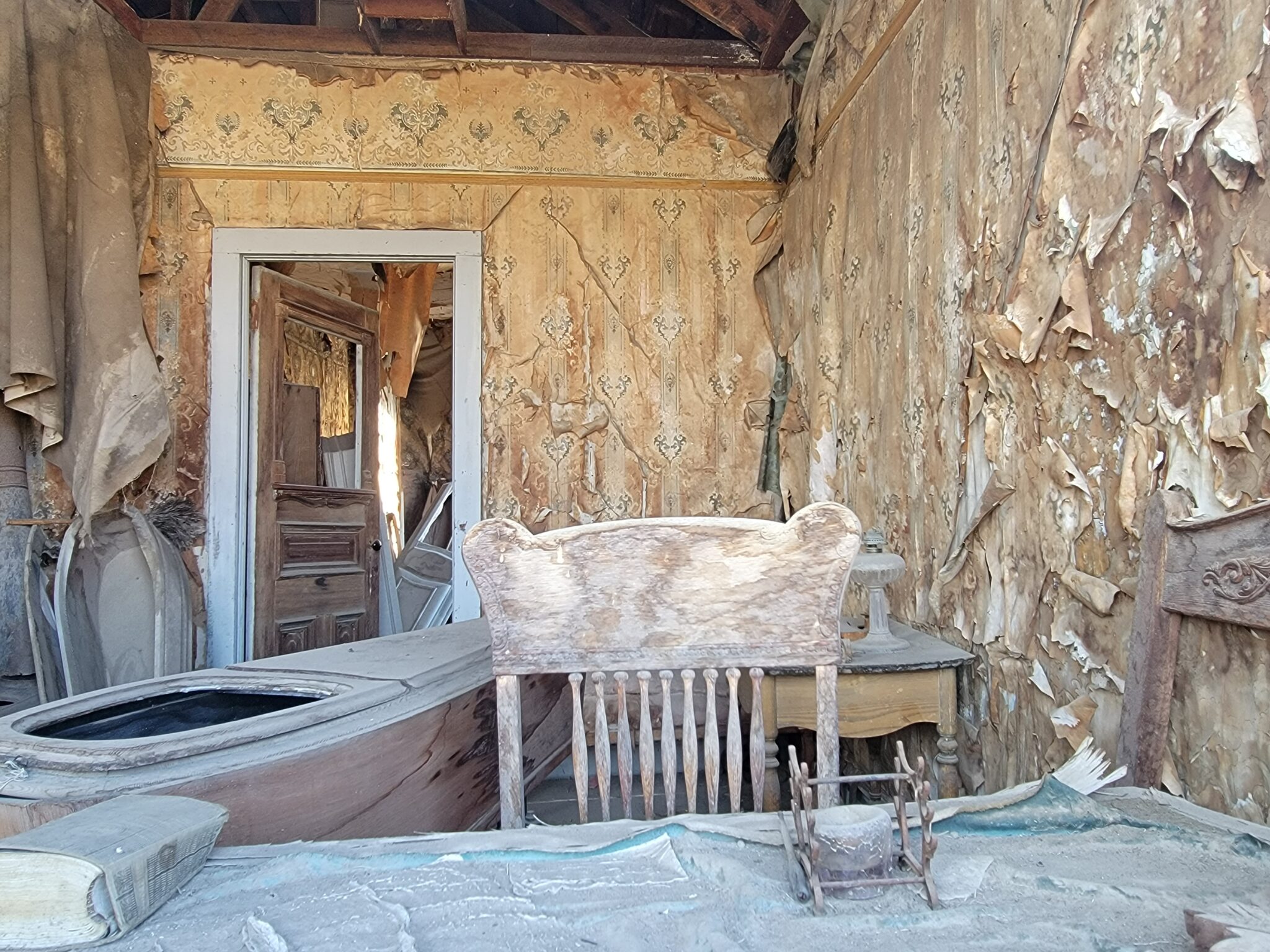
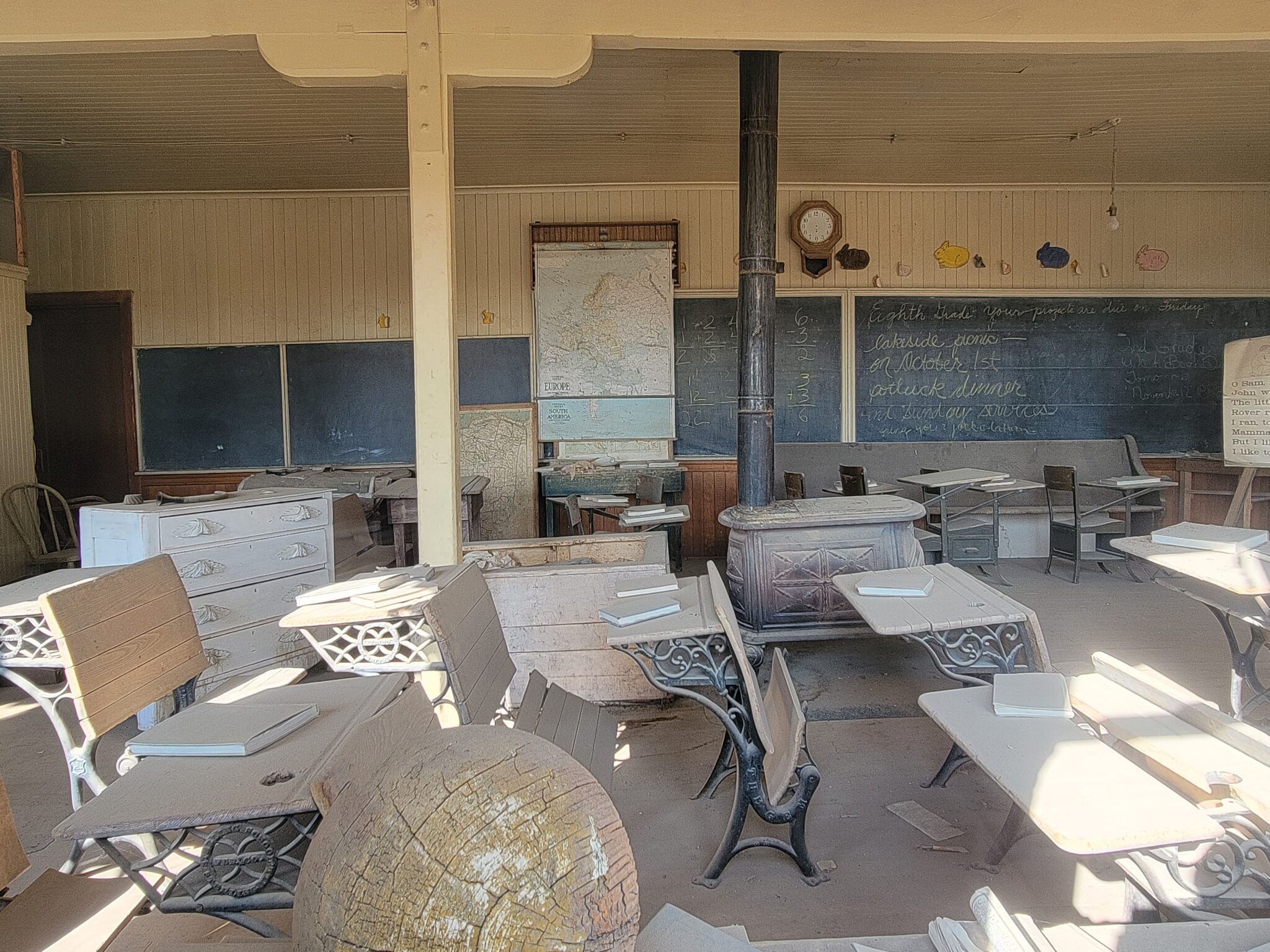
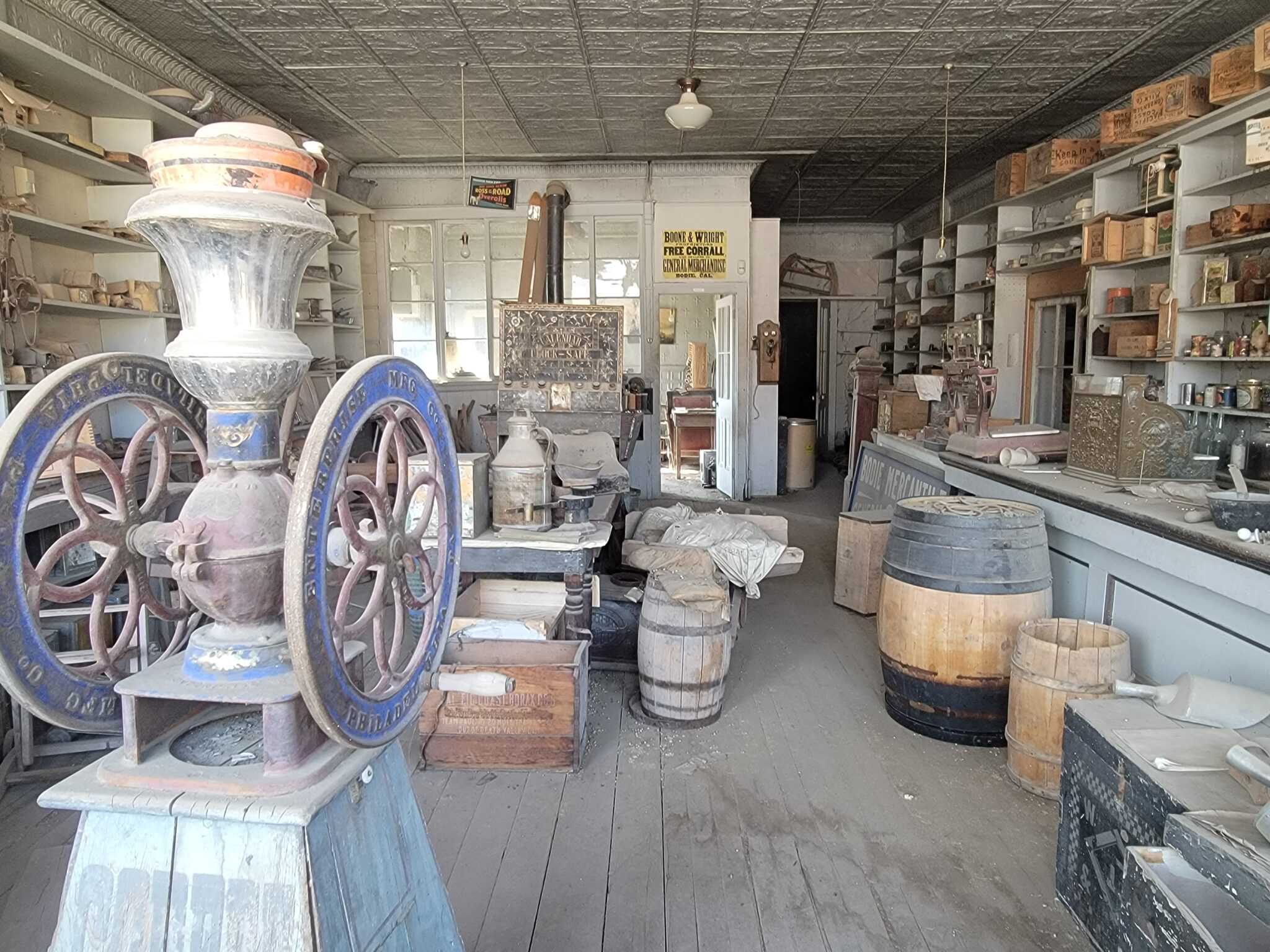
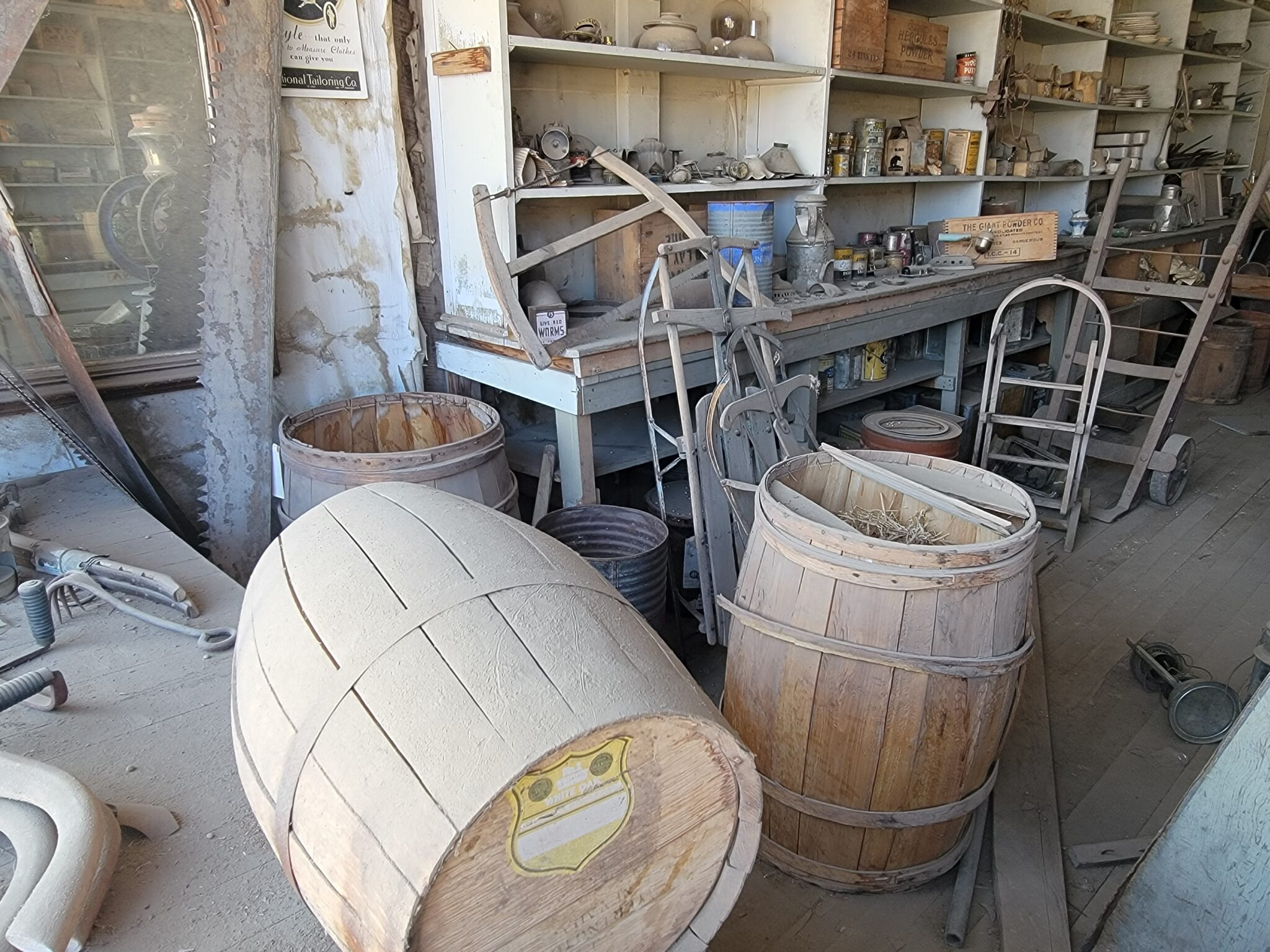
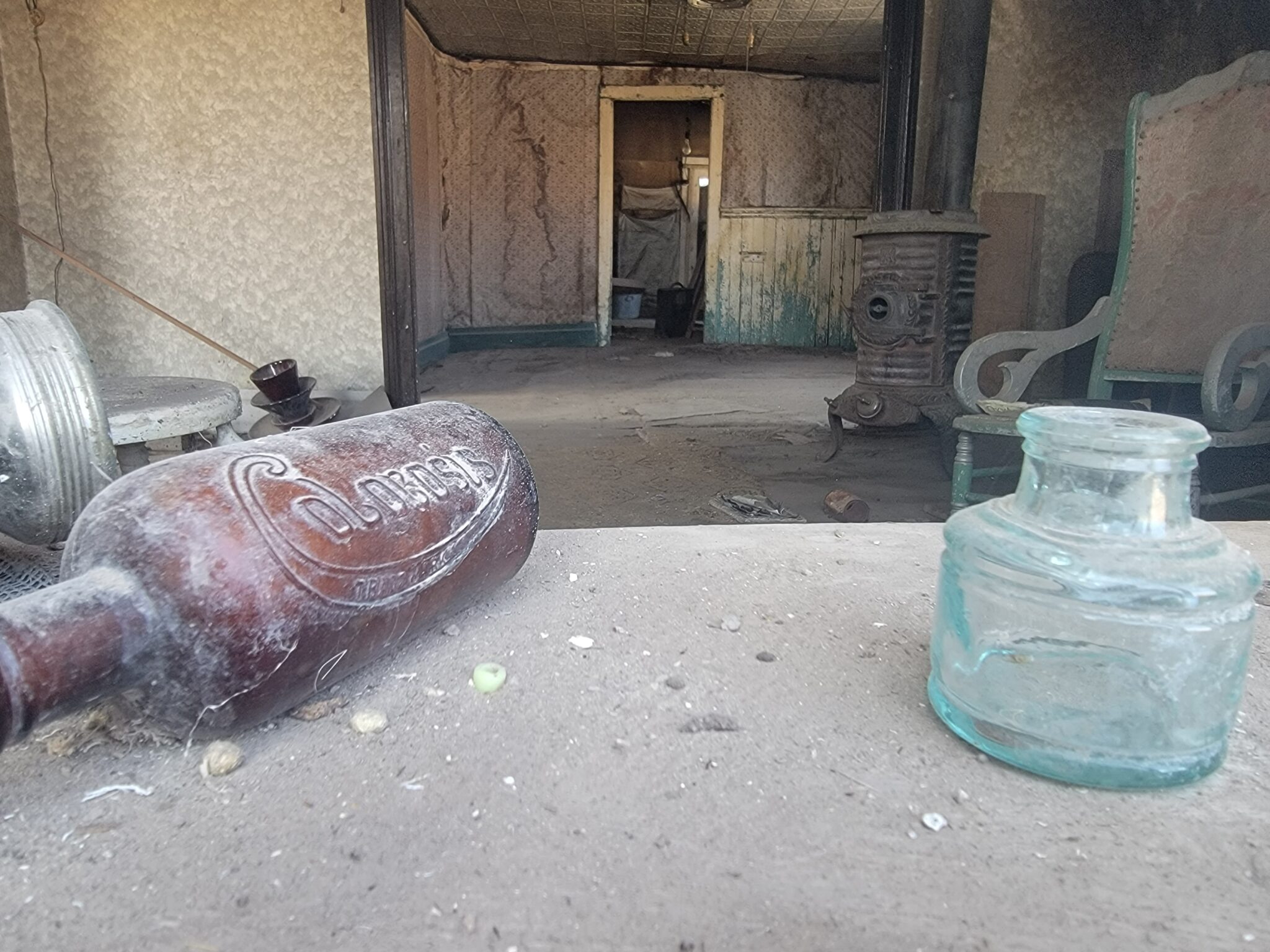
And on the way home, the biggest flock of sheep we’ve ever seen. This was just part of it.
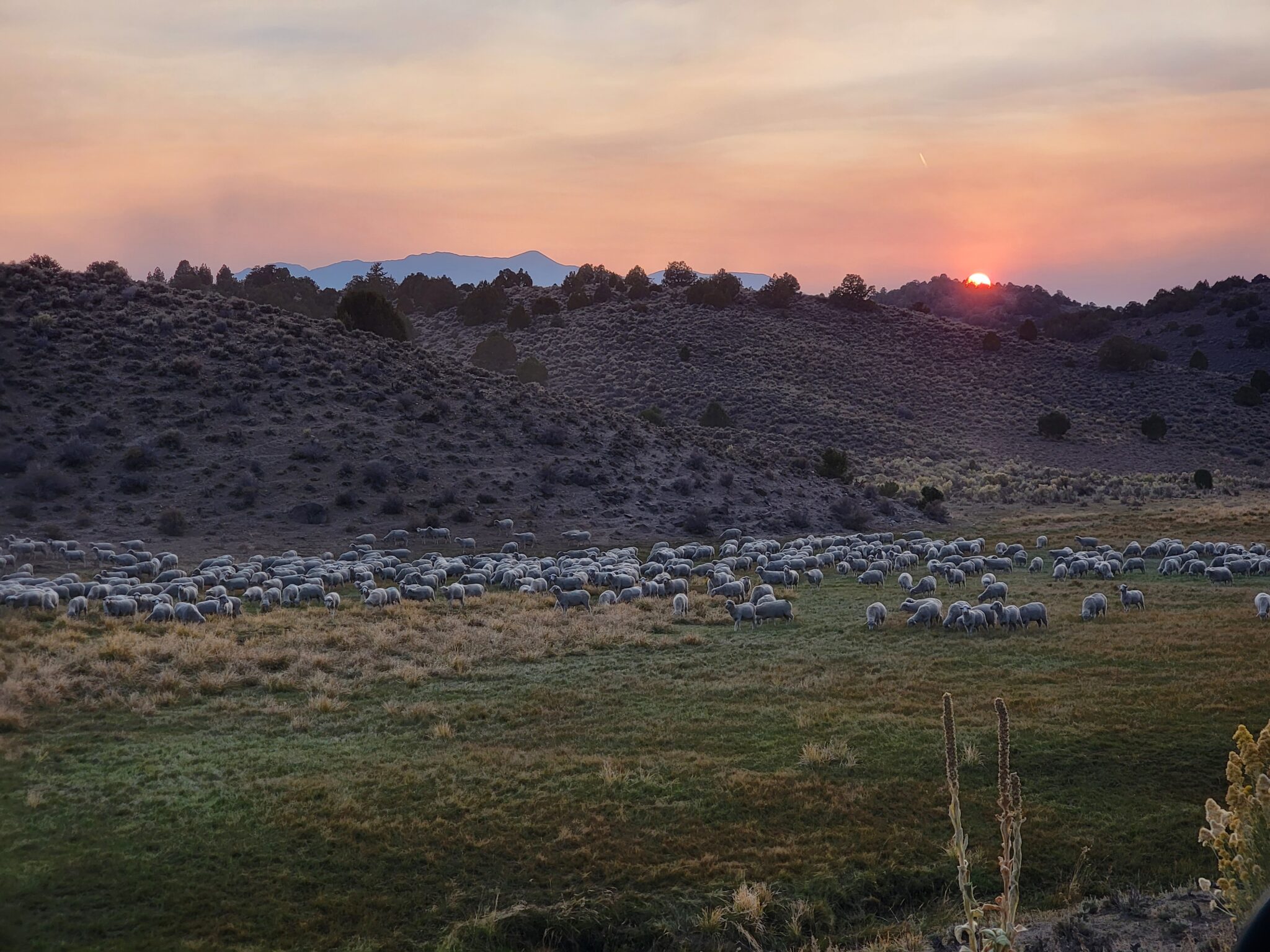
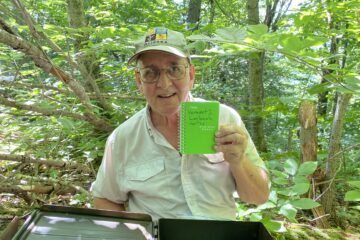
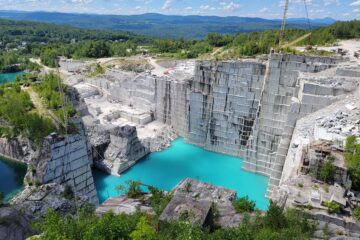
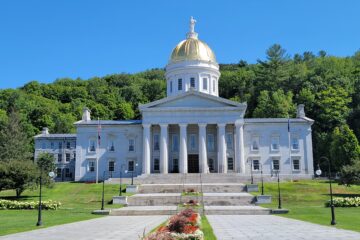
2 Comments
Jay Waters · October 26, 2021 at 10:53 am
That looks like it was quite a place in it’s hey-day. Any indication of where the “fallen doves” were located?
Jane Appel · October 26, 2021 at 6:39 pm
Jay, here’s a quote from the guidebook: “Along with miners and merchants, Bodie attracted a rougher element, who gave the town a reputation for bad men and wild times. There were more than 60 saloons, many near Bonanza Street prostitutes’ “cribs” and opium dens in Chinatown.” A park ranger described how undertakers would patrol the streets every morning looking for bodies.